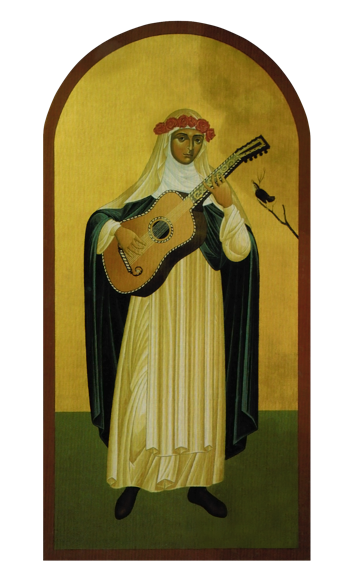The Bathtub Madonna
Excerpt:
THE BATHTUB MADONNA
The Portuguese in Montreal have a fine tradition of building lovely little
shrines to Our Lady of Fatima in their front yards. Sometimes they put a
rock garden around them or even a small pond, but the most interesting part
is the niche itself. More often than not they are made out of old cast iron and
porcelain bathtubs, standing on edge with the faucet side down, embedded i
a concrete pedestal. The upper oval becomes a cupola adorning and
protecting the statues of the Virgin with a charming rococo aura.
It is with this local tradition in mind that Pepito started digging the hole in
the front yard. Being, as he was, an empathetic sort of fellow, he thought tha
by installing the statuette his mother had sent him it might help him integrate
a little more easily. The Portuguese café at the corner refused to serve him.
They said it was a cultural club. What was wrong with them? He even spoke
a little Portuguese. What Pepito didn’t realize was why they didn’t like him.
It was the way he looked at their daughters, not at their ass behind their
backs, but straight at them with a naive appreciation of womanhood that the
found too blatantly honest to be socially acceptable. And the large canvasse
Pepito liked to paint on his front porch, the giant flowers that always had an
uncanny resemblance to open, petulant labia. Pepito was convinced that th
message of the inherent sexuality in nature was quite subliminal, but in
reality it was about as subtle as a brick in a bowl of soup.
So when Pepito stood a bathtub up in his front yard as a gesture of spiritual
solidarity with his neighbours, poured some cement, shaped it into a rough
mound, inset some glass beads and transplanted a small rose bush next to it,
he was unaware of the fact that this was an affront to the Portuguese deity,
our Lady of Fatima. The fact that her feet were set in broken glass and rusted
nails left them even more perplexed. Only Mrs. Dombrofski, his upstairs
neighbour, had expressed some interest.
– Rosa de Lima. I think I heard of her. Patron saint of the South Americas,
your country?
– Yes, he smiled.He excused himself. The phone was ringing again. The little ads he had
recently put up around the neighbourhood were really starting to work.
Murder Ball
William Le Griz, a down and out detective is catapulted back into his past when a ‘diseappeared’ hoodlum is dug up on a job site. What he had thought to be a secret seems to pop up everywhere he goes. Forced into hiding, there seems to be no way out as a sequence of absurd events twist this hard boiled story into a hilarious comedy of errors. LeGriz’s gritty philosophy is a classic treat on the pertinent side of true ‘Roman Noire’.
Excerpt:
Tar
In this work of speculative fiction Cullen decides to pay for his Political Science degree by taking advantage of the Armed Forces educational programs and eventually lands a job as a clerk in the administration. What he discovers are on-going dossiers that get an operative killed as he copes with personal problems until he meets the formidable Molly. Set in the early 90s in Canada it is an mean affront to the nation’s mamby-pamby facade masking illegal weapons deals that go right to the top.
Excerpt:
Rose de Lima

Peruvian saint
Spanish Santa Rosa De Lima, original name Isabel De Flores born April 20/30, 1586, Lima, Viceroyalty of Peru [now in Peru] died Aug. 24, 1617, Lima; canonized April 12, 1671; feast day August 23, formerly August 30
patron saint of Peru and of all South America and the first person born in the Western Hemisphere to be canonized by the Roman Catholic Church.
Born into a wealthy family, Rosa (the name by which she was always known) was drawn to penitential practices and a spiritual life, which was opposed by her mother, who wanted her to marry. The struggle between them lasted 10 years, during which time Rose made a perpetual vow of virginity, taking St. Catherine of Siena as her model. In 1606 her mother relented and allowed Rosa to become a Dominican of the Third Order. She chose strict enclosure and contemplation and withdrew to the seclusion of a hut in the family garden, where she endured a life of severe austerity: she wore a crown of thorns, practiced fasting, slept on a bed of broken glass and potsherds, and experienced numerous visions, particularly of the devil. Only in the last three years of her life did she leave her seclusion. Her funeral was an occasion of public honour, and many miracles were said to have occurred after her death.
She was beatified in 1668 by Pope Clement IX and declared patron of Lima; she was canonized by Pope Clement X, who proclaimed her patron saint of South America, the Indies, and the Philippines.


